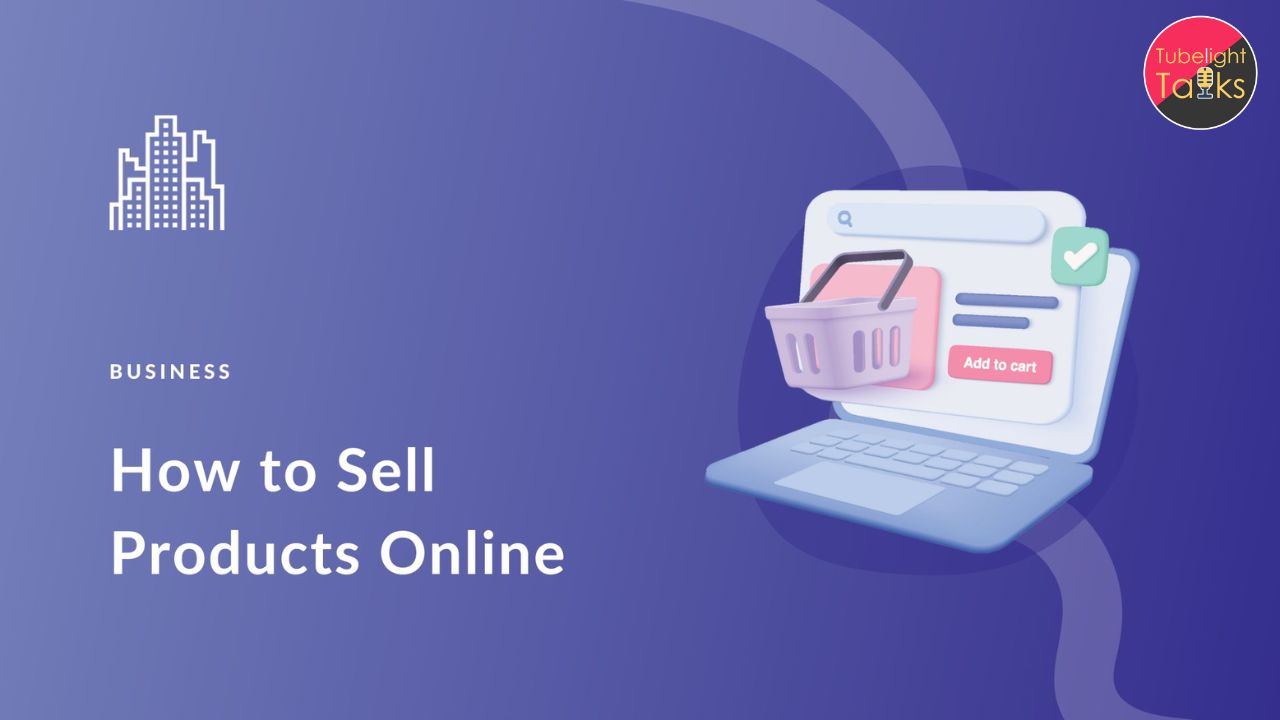How to Sell Online: Selling online has become one of the most accessible and profitable ways to start a business. Whether you’re selling handmade crafts, digital products, or retail goods, the internet provides endless opportunities to reach customers worldwide. If you’re new to online selling, this guide will walk you through the process in simple, easy-to-follow steps.
1. Choose What to Sell
How to Sell Online: The first step to selling online is deciding what you want to sell. Here’s how to choose the right product:
- Identify Your Passion or Skills: Start with something you’re passionate about or skilled in. For example, if you love baking, consider selling homemade cookies or cakes.
- Research Market Demand: Use tools like Google Trends, Amazon Best Sellers, or social media to see what people are buying.
- Solve a Problem: The best products solve a specific problem. For example, eco-friendly products appeal to environmentally conscious buyers.
- Start Small: Don’t overcomplicate things. Begin with a few products and expand as you grow.
2. Understand Your Target Audience
Knowing your audience is key to selling successfully. Ask yourself:
- Who are they? (Age, gender, location, interests)
- What do they need? (Pain points, desires, preferences)
- Where do they shop online? (Social media, e-commerce platforms, niche websites)
For example, if you’re selling trendy fashion items, your target audience might be young adults who shop on Instagram or TikTok.
3. Choose the Right Platform
How to Sell Online: There are many platforms to sell online, each with its own pros and cons. Here are some popular options:
- E-commerce Platforms:
- Shopify: Great for building your own online store.
- Etsy: Perfect for handmade, vintage, or unique items.
- Amazon: Ideal for reaching a massive audience quickly.
- Social Media Platforms:
- Instagram: Use shoppable posts and stories to sell directly.
- Facebook Marketplace: Great for local sales.
- TikTok: Leverage viral trends to promote your products.
- Your Own Website:
- If you want full control over your brand, consider creating your own website using tools like WordPress or Wix.
Choose a platform that aligns with your products, budget, and target audience.
Also Read: How AI is Reshaping Creative Industries in 2025
4. Create a Brand Identity
Your brand is what sets you apart from competitors. Here’s how to build a strong brand:
- Choose a Memorable Name: Pick a name that reflects your products and is easy to remember.
- Design a Logo: Use free tools like Canva or hire a designer to create a professional logo.
- Define Your Brand Voice: Decide how you want to communicate with your audience (e.g., friendly, professional, quirky).
- Create a Consistent Look: Use the same colors, fonts, and style across your website, social media, and packaging.
5. Set Up Your Online Store
How to Sell Online: Once you’ve chosen a platform, it’s time to set up your store. Follow these steps:
- List Your Products:
- Write clear, engaging product descriptions.
- Use high-quality photos (natural lighting works best).
- Include pricing, sizes, colors, and other relevant details.
- Set Up Payment Options:
- Offer multiple payment methods like credit cards, PayPal, or digital wallets.
- Ensure your payment system is secure to build trust with customers.
- Add Shipping Information:
- Decide on shipping rates (free shipping is a big selling point).
- Choose reliable shipping partners to deliver orders on time.
- Create Policies:
- Write clear return, refund, and privacy policies.
6. How to Sell Online: Price Your Products Competitively
Pricing can make or break your online business. Here’s how to price your products:
- Calculate Costs: Include the cost of materials, labor, shipping, and platform fees.
- Research Competitors: Check what similar products are selling for.
- Add a Profit Margin: Ensure you’re making a profit while staying competitive.
- Offer Discounts: Use promotions like “Buy One, Get One Free” to attract customers.
7. How to Sell Online: Promote Your Products
Even the best products won’t sell without promotion. Here are some effective strategies:
- Leverage Social Media:
- Post regularly on Instagram, Facebook, or TikTok.
- Use hashtags to reach a wider audience.
- Collaborate with influencers to promote your products.
- Run Ads:
- Use Facebook Ads or Google Ads to target specific audiences.
- Start with a small budget and scale up as you see results.
- Email Marketing:
- Build an email list by offering discounts or free resources.
- Send regular newsletters with product updates and promotions.
- SEO (Search Engine Optimization):
- Use keywords in your product descriptions and blog posts to rank higher on Google.
- Write helpful content that attracts organic traffic.
8. How to Sell Online: Provide Excellent Customer Service
How to Sell Online: Happy customers are more likely to return and recommend your business. Here’s how to provide great service:
- Respond Quickly: Answer customer inquiries within 24 hours.
- Be Polite and Helpful: Treat customers with respect and address their concerns.
- Offer Easy Returns: Make the return process simple and hassle-free.
- Ask for Feedback: Use customer feedback to improve your products and services.
9. Analyze and Improve
To grow your online business, you need to track your progress and make improvements. Here’s how:
- Use Analytics Tools: Platforms like Google Analytics or Shopify Analytics can show you where your traffic is coming from and which products are selling best.
- Monitor Sales Trends: Identify your best-selling products and focus on promoting them.
- Test New Strategies: Experiment with different marketing tactics, pricing, or product offerings to see what works best.
10. Scale Your Business
How to Sell Online: Once you’ve established a successful online store, it’s time to grow. Here are some ways to scale:
- Expand Your Product Line: Add new products based on customer demand.
- Target New Markets: Reach customers in different regions or countries.
- Automate Processes: Use tools like email automation or inventory management software to save time.
- Hire Help: As your business grows, consider hiring employees or freelancers to handle tasks like marketing or customer service.
Final Thoughts
How to Sell Online: Selling online is an exciting journey that offers endless possibilities. By following these steps, you can build a successful online business from scratch. Remember, the key to success is consistency, adaptability, and a focus on providing value to your customers.
Whether you’re selling handmade goods, digital products, or retail items, the online marketplace is full of opportunities waiting to be explored. So, take the first step today and start your journey toward becoming a successful online seller!










